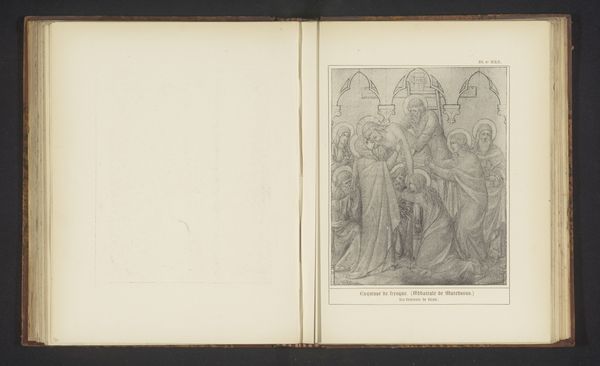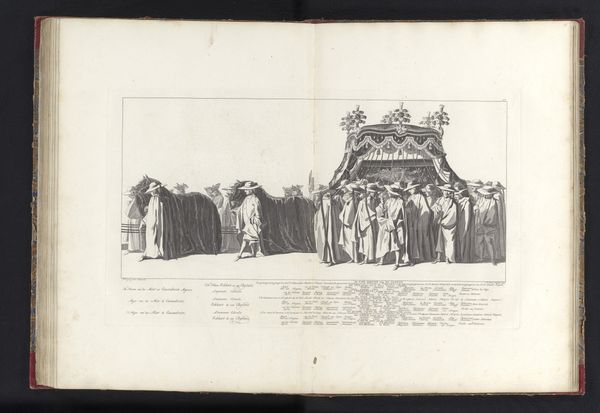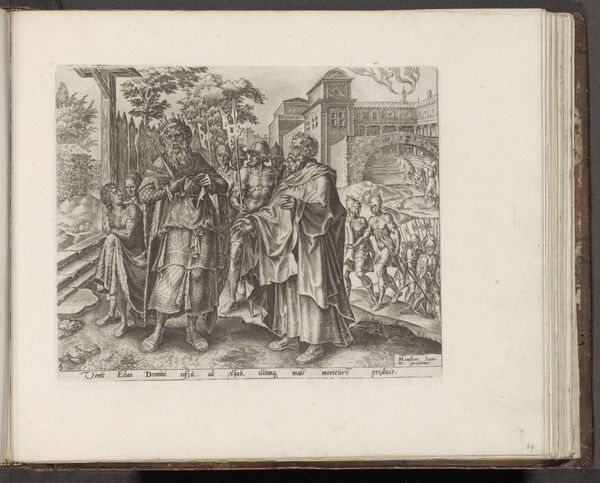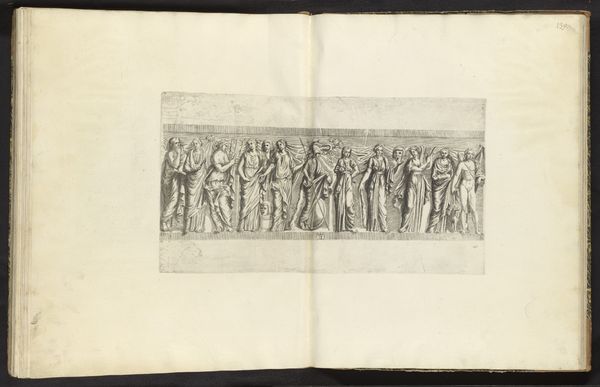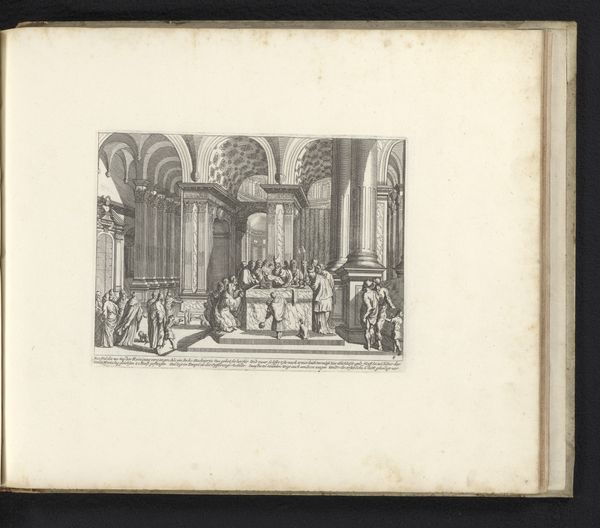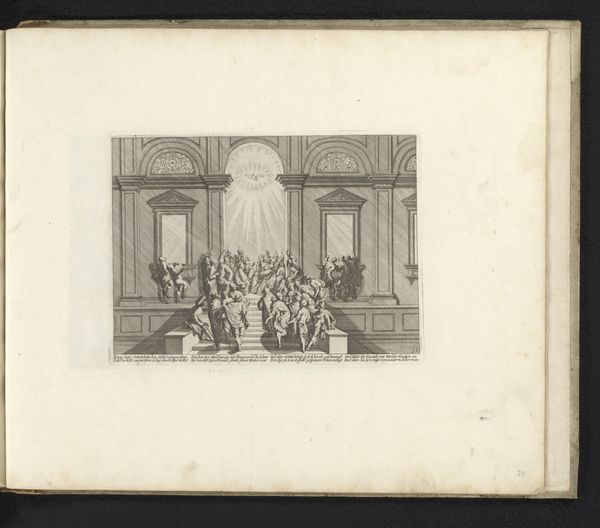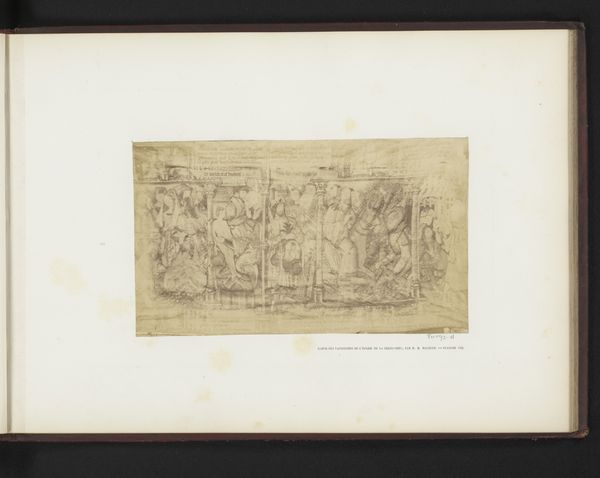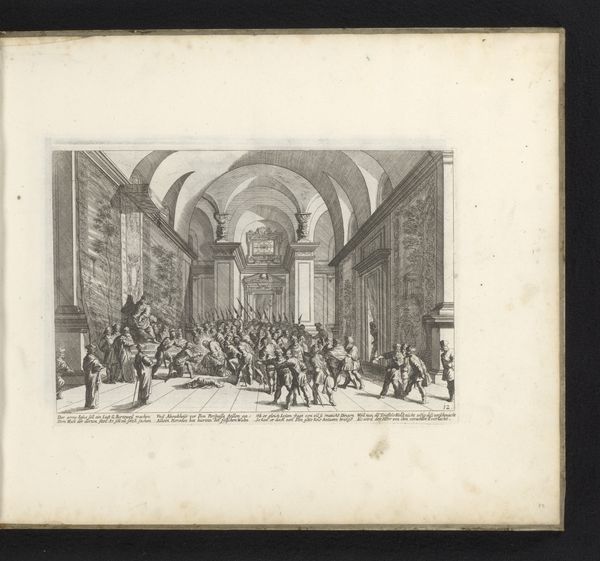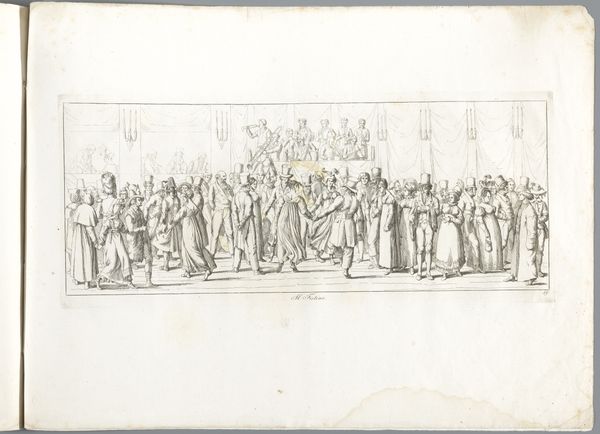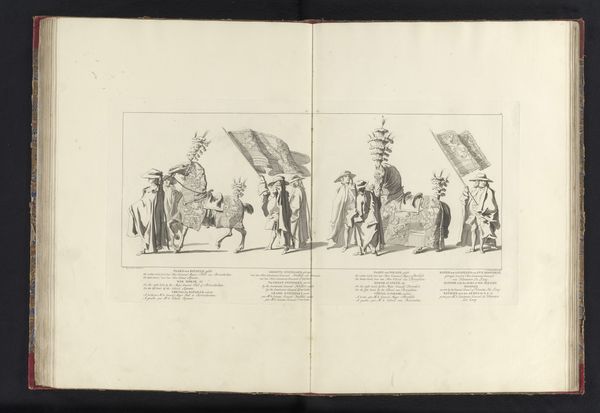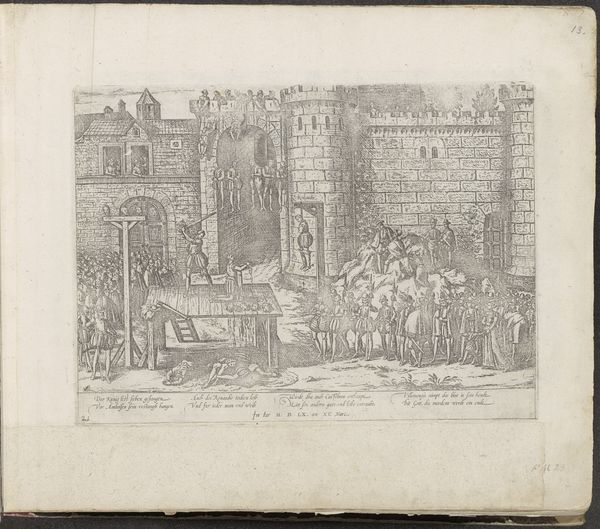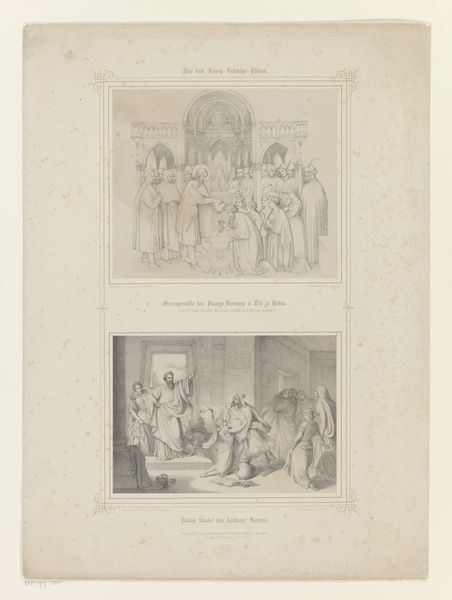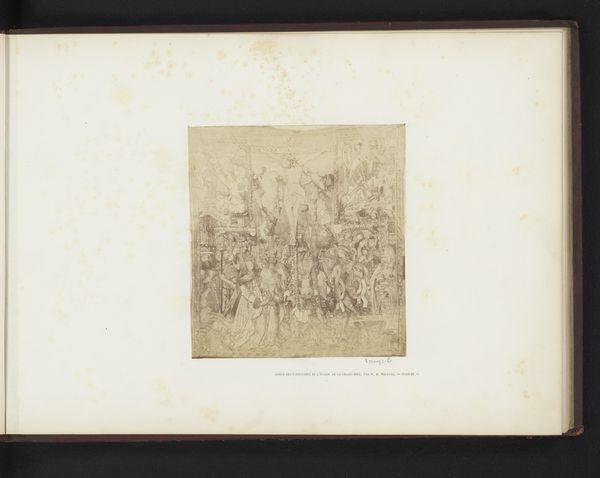
Reproductie van een prent van de terugkomst van een processie van de heilige viaticum before 1865
0:00
0:00
anonymous
Rijksmuseum
drawing, print, paper, ink, engraving
#
drawing
#
medieval
# print
#
paper
#
ink
#
genre-painting
#
engraving
Dimensions: height 202 mm, width 369 mm
Copyright: Rijks Museum: Open Domain
Editor: Here we have a reproduction print of a drawing entitled "Reproductie van een prent van de terugkomst van een processie van de heilige viaticum," made before 1865 by an anonymous artist. It's ink on paper and depicts, well, a procession. I find it interesting how much detail is packed into this monochromatic scene. What stands out to you when you look at this, especially considering the piece's context? Curator: The return of a Holy Viaticum procession captured here offers us a glimpse into the socio-political fabric of the era. This isn’t simply a depiction of religious observance. Think about the role of processions like this: They are public displays of power, solidarity, and communal identity. Before 1865, in many societies, the Church still wielded considerable influence. How might a piece like this function as a reinforcement of that influence, both for believers and perhaps as a subtle reminder to those outside the faith? Editor: That’s fascinating. So, beyond just recording a religious event, the artist might be subtly commenting on power dynamics? I hadn't thought about it that way. Curator: Precisely. Consider the setting, the architecture in the background, the clothing of the figures. Every element contributes to constructing a narrative, consciously or unconsciously reinforcing specific social structures. Who is included in the procession? Who seems excluded? Even in its anonymity and reproducible format, it serves as a tool in shaping collective memory and ideology. Do you think that knowing this was created as a reproduction impacts its social function? Editor: Definitely! A reproduction makes it more accessible, almost like propaganda, spreading the message wider. I never considered art quite like this before! Curator: Indeed. Art, even seemingly simple genre scenes like this, operates within a complex web of social, cultural, and political forces, constantly shaping and being shaped by them. Editor: I'll certainly be looking at art differently now. Thanks for pointing out those hidden power structures within what seems like a straightforward religious scene.
Comments
No comments
Be the first to comment and join the conversation on the ultimate creative platform.
